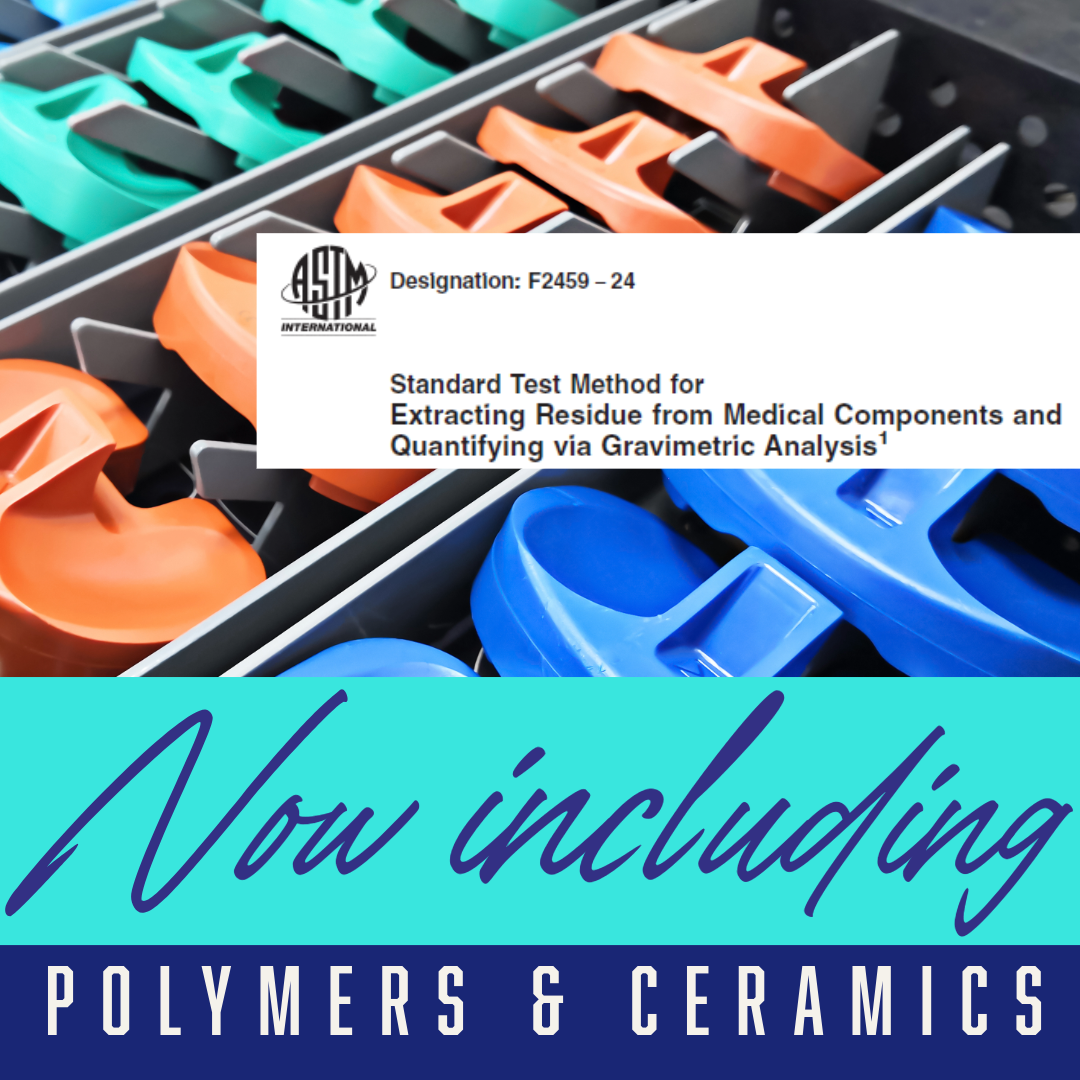New Release of ASTM F2459: Expanding Standards for Medical Device Cleanliness

ASTM recently published a new version of F2459 "Standard Test Method for Extracting Residue from Medical Components and Quantifying via Gravimetric Analysis.” This updated standard expands its scope beyond metallic implants to include ceramic and polymeric medical devices.
Key Updates and Applications
- Expanded Scope: The standard now covers residue assessment for metallic, ceramic, and polymeric medical devices.
- Cleanliness Assessment: It serves as a high-level evaluation method for medical device cleanliness.
- Additive Manufacturing: The standard provides a basis for preparing extracts for particulate residue assessment in additive manufacturing standards.
- FDA Recognition: The FDA recognizes this standard for quality assessment of medical device manufacturing facilities.
Significance and Contributions
- The standard identifies two techniques to quantify extractable residue on medical components.
- It allows investigators to compare relative levels of component cleanliness.
- The method's applicability has been demonstrated through numerous literature reports.
Impact on the Medical Device Industry
The expansion of ASTM F2459 to include ceramic and polymeric medical devices is a significant development for the industry. As medical technology advances, the materials used in device manufacturing have diversified, necessitating more comprehensive testing methods. This update ensures that a wider range of medical devices can be assessed for cleanliness using a standardized approach.
Benefits for Manufacturers
- Consistency: Provides a uniform method for cleanliness assessment across different material types.
- Quality Assurance: Helps manufacturers maintain high standards of cleanliness in their production processes.
- Regulatory Compliance: Aligns with FDA expectations, potentially streamlining the approval process.
Implications for Patient Safety
The enhanced standard contributes to patient safety by:
- Ensuring more thorough cleanliness assessments for a broader range of medical devices.
- Reducing the risk of contamination-related complications in patients.
- Promoting confidence in the safety and quality of medical devices.
The Role of Gravimetric Analysis
Gravimetric analysis, the core technique in ASTM F2459, involves precise weighing of residues extracted from medical components. This method:
- Provides quantitative data on the amount of extractable residue.
- Is highly sensitive, capable of detecting minute amounts of contaminants.
- Offers reproducible results, crucial for quality control and regulatory compliance.
Future Directions
As the medical device industry continues to evolve, particularly with the rise of additive manufacturing and novel biomaterials, standards like ASTM F2459 will likely undergo further changes. Areas of potential future development include:
- Integration with other analytical techniques for more comprehensive residue characterization.
- Adaptation to emerging manufacturing technologies and materials.
- Enhanced protocols for specific types of medical devices or materials.
Scientists from Cambridge Polymer Group contributed to the revisions of this standard and regularly conduct this test. Our involvement underscores the collaborative nature of standards development, bringing together expertise from industry, academia, and regulatory bodies.
This update reflects the evolving needs of the medical device industry, particularly in light of new manufacturing technologies like additive manufacturing. As the industry continues to innovate, the importance of robust, adaptable standards like ASTM F2459 becomes increasingly critical in ensuring the safety and efficacy of medical devices.